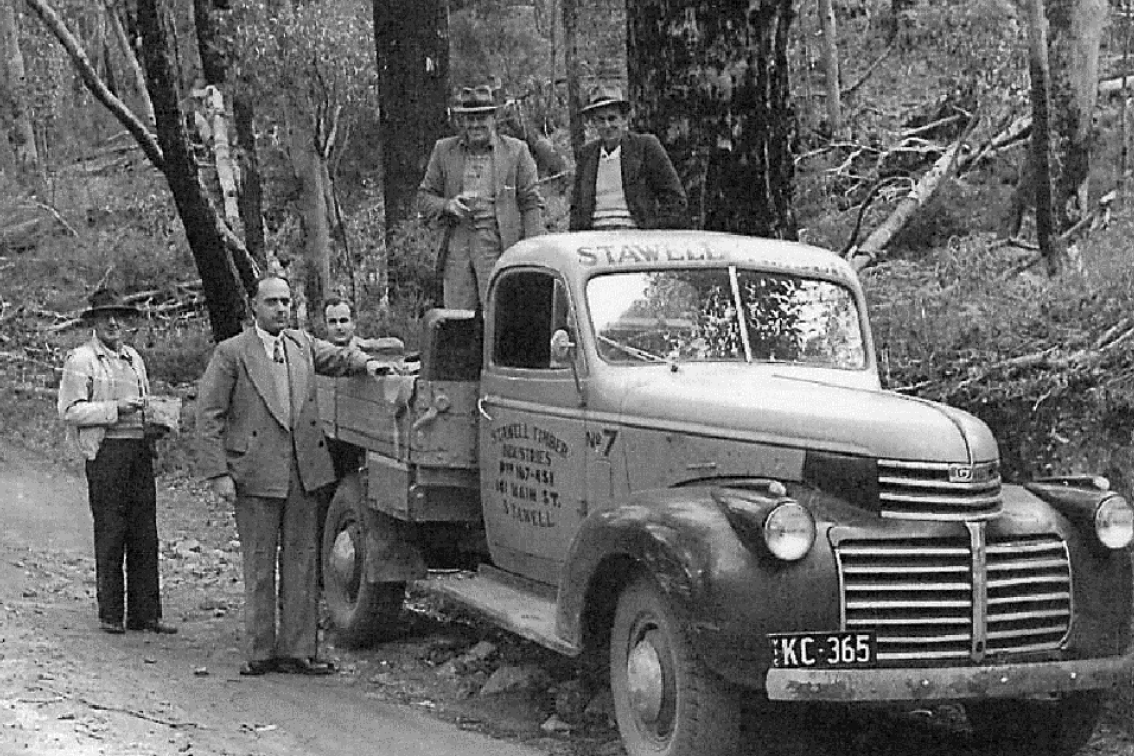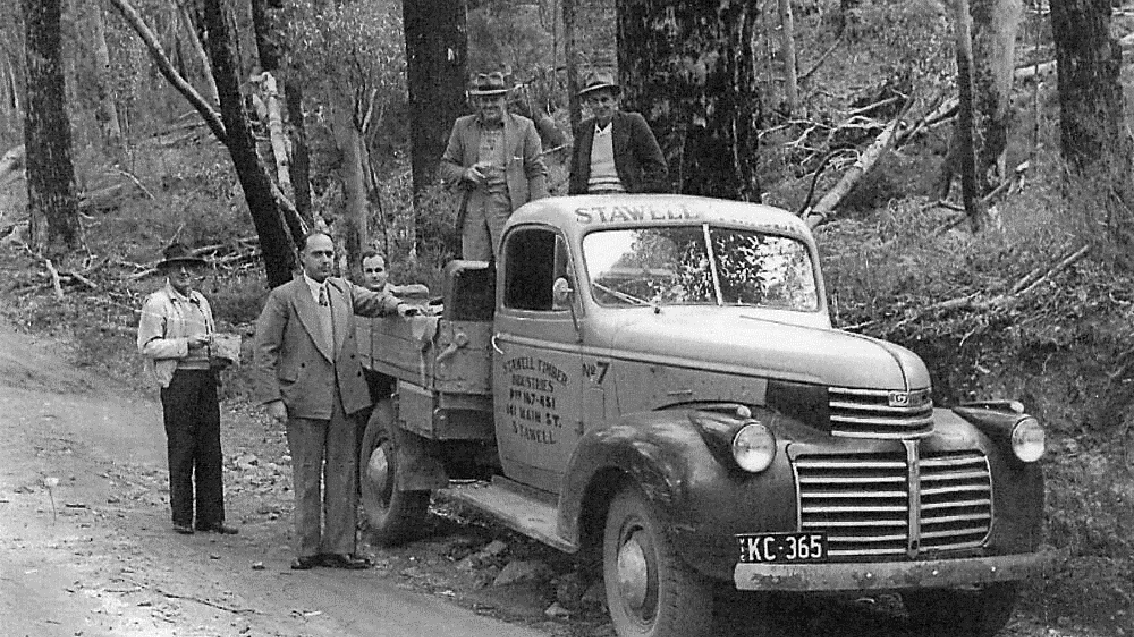General News
1 October, 2024
The legacy of Stawell Timber Industries: the post-war housing pioneers
Stawell Timber Industries' story by Stawell Historical Society.

In 1937 the Ballarat Timber Company, which was wholly owned by the Brown family of Ballarat, opened a merchandising branch of its timber business in Stawell.
Lindsay Brown, a third generation of the Brown family to be involved in the saw milling industry, utilised the family's expertise, and in 1943, along with his wife Marjorie, established a small timber mill in Darlington Road.
The main purpose was to convert pine from local farmers into case material for defence purposes.
In 1946 Lindsay Brown became aware that the Mt. Cole Forest which had been closed for a period of 40 years and contained high quality Messmate (Eucalyptus Oblique), was to be re-opened.

An approach was made to the Forest Commission requesting a substantial allocation be made to the Stawell Company as it outlined to them the future plans for how the Messmate would be transformed into a high-quality end product.
The Company was successful and changed its name in 1947 to Stawell Timber Industries (STI) and was incorporated in 1948 enabling capital to be raised to finance the building of the new complex in Lake Road.
This new complex was to process forest logs into a range of finished products such as scantlings, mouldings, floorboards, weatherboards, joinery and finally houses.
To justify the creation of this enterprise necessitated an emerging market which existed because of the chronic shortage of housing that existed in Australia after World War 2.
In Victoria the Housing Commission was charged with the responsibility of solving this issue.
STI's pioneering method of producing houses in an assembly line system proved visionary.
The factory was basically self-contained with its own hardwood mill, a softwood mill, drying kilns, a moulding mill, a joinery factory, a sheet metal factory and plaster sheet and tile factories.
This included generating its own power by utilising wood waste as fuel, being self-sufficient or in today's terms, a circular economy.
By 1950, STI were producing about 100 houses per year.
These factory built modular houses were transported in 2 or 3 sections throughout Victoria with the primary areas being Western and Central Victoria generally up to 300km's away.
In the early 70's this output increased to 150 and up to 200 houses, which equated to almost one house for every working day of the year.
With progressive and innovative ideas in house building the Company eventually ventured into factory-built brick veneer houses.
Construction was not limited to houses but ranged from Kindergartens to commercial buildings.
Also, following intense negotiations in the1970's, a number of contracts were completed in the Middle East.
By 1955, STI was handling £1 million worth of business per year or in today's terms $34 million, with a peak workforce of 300 people.
The closure of the Company occurred in 1978, mainly due to the depressed domestic market and an environmental ideology.
With thanks to Stewart Brown of Western Australia, son of the late Lindsay and Marjorie Brown.